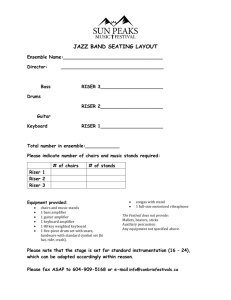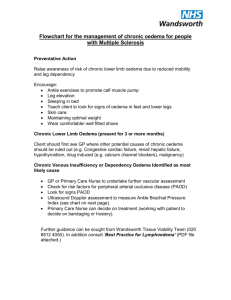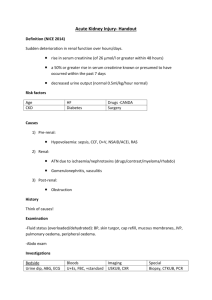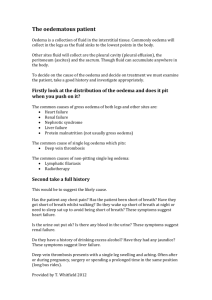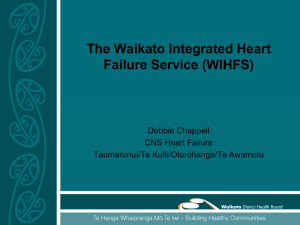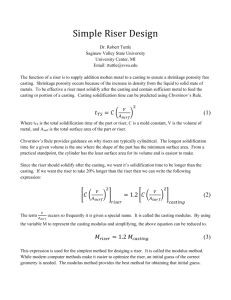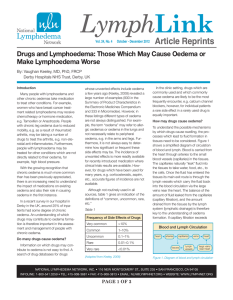Criteria for the supply of riser recliner chairs
advertisement
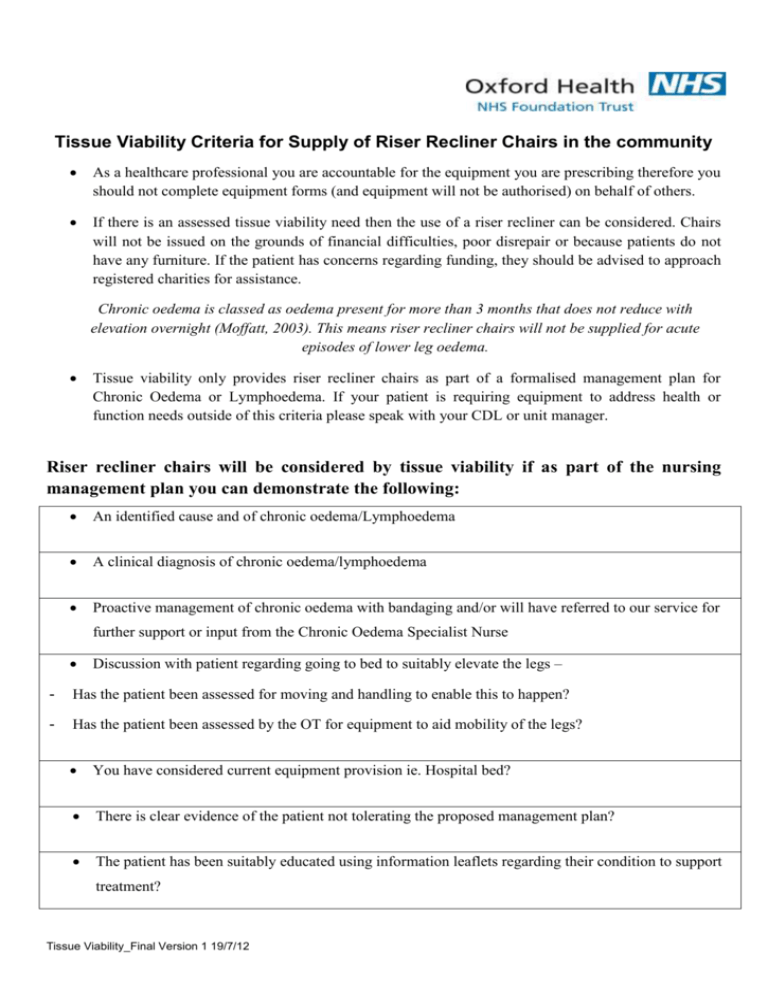
Tissue Viability Criteria for Supply of Riser Recliner Chairs in the community As a healthcare professional you are accountable for the equipment you are prescribing therefore you should not complete equipment forms (and equipment will not be authorised) on behalf of others. If there is an assessed tissue viability need then the use of a riser recliner can be considered. Chairs will not be issued on the grounds of financial difficulties, poor disrepair or because patients do not have any furniture. If the patient has concerns regarding funding, they should be advised to approach registered charities for assistance. Chronic oedema is classed as oedema present for more than 3 months that does not reduce with elevation overnight (Moffatt, 2003). This means riser recliner chairs will not be supplied for acute episodes of lower leg oedema. Tissue viability only provides riser recliner chairs as part of a formalised management plan for Chronic Oedema or Lymphoedema. If your patient is requiring equipment to address health or function needs outside of this criteria please speak with your CDL or unit manager. Riser recliner chairs will be considered by tissue viability if as part of the nursing management plan you can demonstrate the following: An identified cause and of chronic oedema/Lymphoedema A clinical diagnosis of chronic oedema/lymphoedema Proactive management of chronic oedema with bandaging and/or will have referred to our service for further support or input from the Chronic Oedema Specialist Nurse Discussion with patient regarding going to bed to suitably elevate the legs – - Has the patient been assessed for moving and handling to enable this to happen? - Has the patient been assessed by the OT for equipment to aid mobility of the legs? You have considered current equipment provision ie. Hospital bed? There is clear evidence of the patient not tolerating the proposed management plan? The patient has been suitably educated using information leaflets regarding their condition to support treatment? Tissue Viability_Final Version 1 19/7/12 A riser recliner will not be provided if: It is not part of a clear management plan The patient has mental capacity but is not concordant with care plans Palliative care for functional and comfort needs Has active pressure damage to the sacrum The patient is refusing to go to bed Acute episode of illness Lymphoedema/ chronic oedema secondary to other medical conditions e.g. heart failure / cancers etc that is untreatable. For purely health needs Important information regarding reducing pressure damage risks A riser recliner should not be used as a first line management for pressure damage prevention. The standard riser recliners we provide have a tilt an space action which elevate legs higher but when the chair is in the reclined position it puts increased pressure on the sacral area. Pressure cushions in riser recliners can provide certain risks to the patients who use them; therefore formal risk assessment must be undertaken and documented. 1. Some cushions are too deep to sit in the seat well of the chair. 2. If patient is doing independent transfers the cushion can fall off which then becomes a risk for tripping /falling. 3. The cushion can slip when the riser function is used causing patients to slip out of the chair. 4. Patients /family and carers need to be educated on pressure damage prevention and be given written guidance. Some patients’ need a specialist seating assessment due to health related needs (i.e. posture) this will need to be referred to an OT. Tissue Viability_Final Version 1 19/7/12
